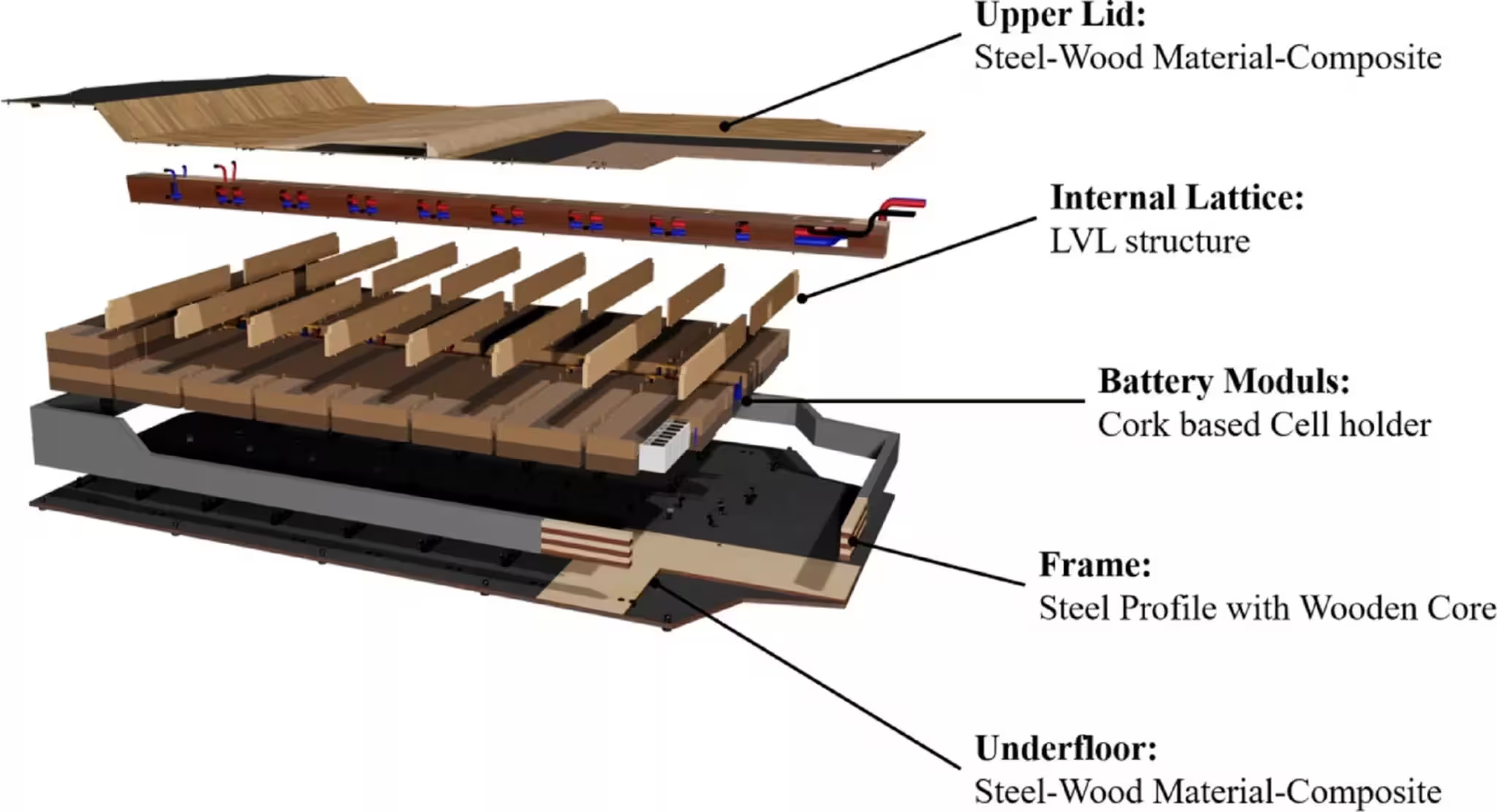3 Minutes
Innovative Materials: Rethinking Battery Safety and Sustainability in EVs
Electric vehicles (EVs) have revolutionized the automotive industry, but challenges around battery safety and sustainable design persist. A recent breakthrough suggests that using wood—yes, sustainably sourced wood—could dramatically improve both the ecological footprint and crash resilience of EV battery housings.
Research Spotlight: Wood-Steel Hybrid Battery Packs Go Head-to-Head With Aluminum
Scientists at the Technical University of Graz in Austria have conducted a pivotal study comparing traditional aluminum battery enclosures with experimental wood-steel hybrids. Aluminum has long been favored for its durability and strength, but its energy-intensive production process poses environmental concerns. In contrast, the innovative hybrid design utilizes renewable birch, poplar, or paulownia wood as a core, encased in high-strength, ultra-light steel.
Eco-Friendly, High-Performance Design
The premise is simple but bold: can a wood-based core match the mechanical integrity of solid aluminum? According to the study, the answer is yes. In standardized crash tests simulating severe vehicle impacts, the wood-steel hybrid battery housings—dubbed "Bio!Lib"—performed on par with the aluminum structures used in vehicles like the Tesla Model S. The secret lies in the natural cell structure of wood, which excels at absorbing energy during collisions.
Poplar and birch hybrids demonstrated up to 98% greater energy absorption capacity compared to ductile aluminum, and 76% greater than even high-strength aluminum. All three wood-based variants maintained superb resistance to bending under stress, highlighting their structural reliability for real-world automotive use.

Flame Resistance: Cork to the Rescue
Battery fires are one of the major safety concerns facing current EV technology. Surprisingly, the TU Graz team found that integrating cork—a renewable, organic material—into the housing design offered significant fire resistance. During testing, battery cases lined with cork registered temperatures over 100°C (212°F) lower on the outer shell compared to conventional aluminum enclosures.
Florian Feist, who led the project, explains, “When cork is exposed to very high temperatures, it chars. This carbonization drastically reduces the thermal conductivity, creating an effective, natural barrier against heat.”
Market Relevance: A Step Forward for Green Mobility
With electric vehicles rapidly gaining market share, the environmental impact of their components is coming under scrutiny. These findings suggest that wood-based battery housings could play a vital role in reducing greenhouse gas emissions from material production, while simultaneously enhancing crash safety and thermal management.
Potential use cases include integration into existing EV architectures, particularly in models seeking to boost both sustainability and occupant safety without compromising on structural integrity. This approach underscores a wider industry trend toward eco-friendly materials and smarter engineering in the EV sector.
The Road Ahead
While the idea of housing sensitive, flammable lithium-ion batteries in wood might seem counterintuitive, rigorous scientific research is illuminating new possibilities for the future of electric transportation. As carmakers and tech innovators seek greener and safer solutions, pioneering materials like wood-steel hybrids and cork could become an essential part of next-generation electric vehicles.
Source: carscoops



Comments